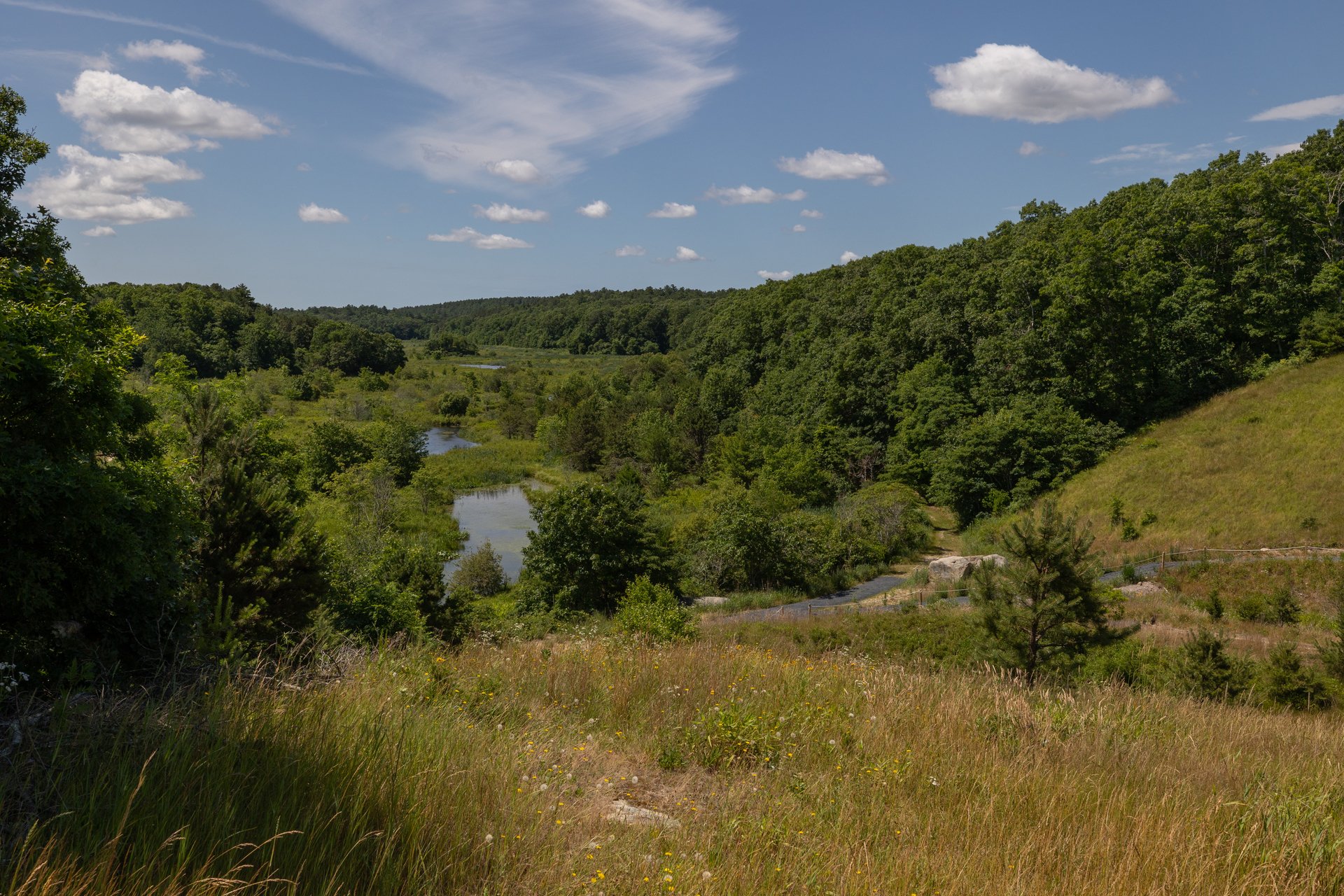Conservation Projects at Tidmarsh
Tidmarsh Wildlife Sanctuary is actively involved with a variety of projects that relate to protecting and restoring resilient landscapes.
Herring Count Project
The Tidmarsh Herring Count Project is focused on documenting the number of fish that make it up Beaver Dam Brook en route to Fresh Pond or to elsewhere in the riverine system to spawn. This count provides the sanctuary with important data about the post-restoration return of nature to Tidmarsh. Learn more about the Herring Count Project and how to get involved
A Research Collaboration
Living Observatory is a nonprofit, art, science, and technology learning initiative founded by Glorianna Davenport and Alex Hackman. Prior to the active restoration, Living Observatory researchers provided data that informed the restoration design.
Mass Audubon and Living Observatory work together to expand this place-based, long-term outdoor laboratory in ways that engage scientists, naturalists, citizen scientists, artists, and visitors.
Climate Change Response
Tidmarsh Wildlife Sanctuary is a landscape of hope, where promising land conservation approaches revive degraded ecosystems into beautiful, diverse, regenerative landscapes. The restoration and conservation of this property has powerful potential to boost nature's resilience to the impacts of climate change.
Natural landscapes help us adapt to a climate changing world in many ways—by storing carbon, absorbing greenhouse gases, storing floodwaters from increasing extreme precipitation events, and blunting the impact of storm surges. As a freshwater wetland, Tidmarsh provides a resilient landscape that may help plants and animals adapt to changes in climate.
A Long History of Ecological Restoration
Along with the Massachusetts Division of Ecological Restoration, U.S. Fish and Wildlife Service, USDA Natural Resources Conservation Services, and numerous other partners, the previous owners of Tidmarsh Farms undertook the largest freshwater ecological restoration ever attempted in the Northeast, creating a mosaic of habitats including ponds, cold-water streams, recovering swamps including red maple and Atlantic white cedar, grasslands, and pine-oak forest.
Mass Audubon provided technical assistance during the design and implementation of the project, but our role expanded dramatically following the acquisition and creation of the Tidmarsh Wildlife Sanctuary. Today, we are leading new restoration actions on the site and stewarding the land to maintain and improve its health. This inspiring restoration story drives our work to restore healthy wetlands at other retired cranberry bogs in the region.
Learn more about Tidmarsh restoration and climate change response in our story map



